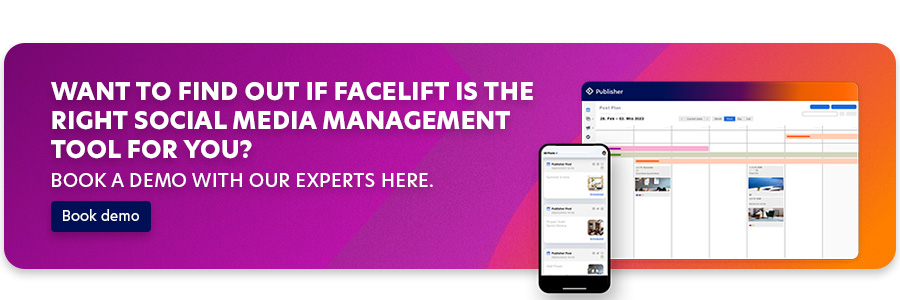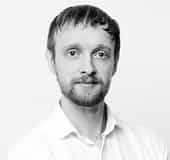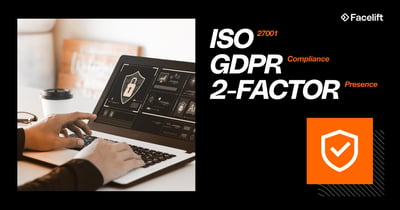Some industries just seem to have a better stage presence, and finance on social media can sometimes feel a bit out of place. Alongside industries such as logistics, insurance, and others, banks and other institutions haven't always had it easy, especially on highly visual platforms like Instagram.
The financial sector has always been high-stakes, but the battleground has shifted these days. It's no longer just about who has the most branches or the biggest vaults; today, it's about who commands digital better than the competition.
Thus, the world of FinTech was born: agile, tech-savvy, and disruptive.
Naturally, social media has played a significant role in the strategies and development of the FinTech sector and has emerged as a new arena in which industry forces vie for control.
But how are these financial titans and techy upstarts wielding social media to their advantage? How can your organization boost its own social media presence despite what many may see as a "boring" facade?
Let's get into it...
Banks and storytelling on social media
Storytelling is a potent tool for any organization looking to vitalize its image and connect more deeply with its audience on social media. Businesses can transform a perceived 'boring' nature into engaging, relatable narratives through storytelling.
Humanizing the brand through stories
Financial institutions have rich histories and play significant roles in people's lives. Sharing these stories can humanize the brand and build personal connections with followers. For instance, a bank with a century-long history could share a series of posts highlighting key milestones in its journey to the present day.
Example: "The Community Impact Series"
"The Community Impact Series" is a hypothetical example of a financial institution using storytelling through social media.
The series showcases short video stories about local businesses that the bank has supported. The videos narrate their growth journey and how the bank's financial assistance played a role in their development. Each story concludes with a message about the bank's commitment to fostering community growth and economic development.
These videos can be shared on platforms such as Instagram, Facebook, and LinkedIn and can be tailored to each platform's unique audience and format. For instance, on Instagram, the bank could use visually appealing infographics and short clips, while on LinkedIn, they might opt for more in-depth interviews with business owners.
Utilizing user-generated content
Another angle is encouraging customers to share their stories about how your financial institution's services have impacted their lives or businesses in a positive way. This user-generated content provides authentic testimonials and actively involves the audience in the bank’s narrative, creating a more engaging and community-centric social media presence.
Educational content as a trust-building tool
Financial literacy is a massive opportunity area for organizations trying to win at finance on social media.
Institutions can use social media to educate their audience about financial planning, investment strategies, and market trends.
This approach positions them as thought leaders and trusted financial advisors while also making them accessible. Educational content can range from simple tips on budgeting to in-depth analyses of market movements, all tailored to the needs and understanding of their audience.
Example: interactive financial literacy campaigns
Consider a campaign where a bank uses Twitter polls and Instagram stories to ask its followers about their most pressing financial questions. '
The responses could then be used to create a series of Facebook or Instagram Live sessions where experts from the bank address these questions in real time. This interactive approach educates and engages the audience, making finance more approachable and less intimidating.
Tailoring content to different segments
It’s important for these institutions to recognize the diverse needs of their audience. Tailoring content to different segments – from college students needing advice on student loans to retirees looking for investment tips – ensures that the educational content is relevant and useful. Personalized content can significantly increase engagement and loyalty.
Showcasing success stories
Sharing success stories of individuals who have benefited from their financial advice can be powerful. For example, a series of posts highlighting how a young entrepreneur successfully grew their business with the help of the institution's financial advisors. Content like this is a great type for customers in the later stages of their buyer journeys, and once again, great storytelling performs wonderfully on social. (Especially if you can do it in a video!)
Leveraging data for personalized engagement
Everything today is data-driven - or at least it should be. I'm a big fan of all content, whether it's for social, marketing, or anything else, being driven by information. Without it, it's hard to know whether content is reaching its audience, and if it is reaching them, is it doing so optimally? How can it be improved? How can community management be improved?
The power of data analytics cannot be overstated in refining a social media strategy. Financial institutions operating on social media can craft more personalized and relevant content by understanding their audience's demographics, preferences, and behaviors.
This might mean creating targeted campaigns for different segments or using insights to drive discussions on topics that resonate most with their audience.
Understanding the audience through data
One of the key strengths of social media is the vast amount of data it generates.
Financial institutions can analyze this data to understand their audience's preferences, behaviors, and needs. This information is crucial for crafting content that resonates.
For example, by analyzing engagement patterns, a bank might find that their customers are particularly interested in content about saving for retirement, prompting them to create more focused content in this area.
It can also provide information about when your followers are most active. If your content isn't reaching them, why bother?
Example: tailored campaigns showcasing how banks use social media
Imagine using data from your social media interactions to identify a trend: a significant portion of your audience is young professionals seeking advice on investment. Utilizing this insight, launch a targeted campaign titled "Investment 101 for Millennials."
This campaign is spread across various LinkedIn, X, TikTok, and Instagram. It uses tailored content like infographics, live Q&A sessions on Instagram and TikTok, and insightful articles on LinkedIn, all designed to engage this specific demographic.
If you're interested in creating a data-fueled campaign such as this, take a look at quintly, our deep analysis social media tool for the most advanced metrics on the market.
Personalized content for enhanced user experience
Going a step further, financial institutions can use their data to personalize the user experience.
For instance, if it shows that a segment of customers frequently engages with content about property loans, the bank could use targeted ads or personalized emails to provide these customers with more relevant information on this topic.
Measuring success and refining strategies
Finally, data isn't just for understanding the audience; it's also for measuring the success of your social media strategies. Financial institutions can continuously refine their approach to financial topics on social media by tracking key metrics like engagement, click-through, and conversion rates, ensuring they are always aligned with their audience's evolving preferences.
Read our guide to the most important KPIs for social media.
Interactive and real-time engagement
Financial institutions can engage with customers in real-time through social media, bringing a new dimension to 'finance on social media.'
Financial institutions can engage with customers in real-time through social media, bringing a new dimension to 'finance on social media.' Social media's dynamic and interactive nature offers a prime opportunity for this engagement.
Customers expect quick and responsive interactions, making real-time conversations essential. Banks can use social media to engage with their audience in real time. They can respond to comments, host live Q&A sessions, and conduct interactive polls and surveys.
Financial institutions can use Instagram Stories with polls or quizzes on financial topics, Facebook Live sessions to discuss investment strategies, and LinkedIn posts with interactive infographics to foster engagement and educate the audience simultaneously.
Banks can use social media to improve customer service by providing prompt and efficient support for customer queries. For more information on how to provide top-notch customer service via social media, we wrote a guide and packed it full of premade templates that you can use to streamline your community management. Click the banner below to get them for free:
Example: A week of financial wellness
The bank uses various social media platforms daily to engage with its audience on different financial topics. The campaign includes interactive Facebook posts with tips on budgeting, Instagram Stories with daily financial challenges, and a live YouTube webinar on managing personal finances.
This campaign is a great example because it focuses on educating and involving the audience directly, which is essential for promoting engagement..
B2B content ideas for finance on social media
And what about financial institutions that are specifically for B2B? There are still ways to target your audience.
Here are some ideas that B2B financial institutions can use for their social channels:
Industry thought leadership
- Publish in-depth articles and white papers on LinkedIn about emerging financial trends, regulatory changes, and market analyses.
Networking and partnerships
- Utilize LinkedIn for networking with other businesses, industry leaders, and potential clients. Share content about successful partnerships or case studies highlighting how the bank has supported other businesses, demonstrating their expertise in B2B finance.
Read here about how German insurance giant HDI uses LinkedIn networking for sales enablement.
Webinars and online events
- Host webinars or online roundtables discussing financial topics relevant to businesses, such as risk management, corporate finance, or fintech innovations. Promote these events on LinkedIn to attract a professional audience.
Corporate social responsibility (CSR) initiatives
- Share CSR initiatives focusing on how the financial institution contributes to economic development, supports small businesses, or engages in sustainable finance. This can resonate well with businesses looking to partner with socially responsible institutions.
Tailored B2B content
- Create content specifically tailored for your business clients, such as tips for small business financing, insights on managing business accounts, or trends in business insurance. This content should be informative, relevant, and shareable within the business community.
Triumph on social media, no matter your sector
The bigger your institution, the bigger its social media needs, especially if your organization operates multiple offices or internationally.
When it comes to simplifying social media operations, Facelift is your partner in efficiency and holistic management.
With Facelift, you can:
- Operate at scale with all major social media platforms, regardless of number or type, in a single spot.
- A single publishing and editorial calendar for planning your campaigns
- Take advantage of customizable inboxes for community messages
- The most advanced social media analytics on the market
- Enjoy unlimited user seats and highly flexible user controls for cross-team collaboration, approvals, and far more.
If you'd like to learn more about how Facelift can help your financial institution reach its full potential on social media, let's set up a demo together and introduce you to what you can expect. Follow this link to schedule your demo with our product experts.








